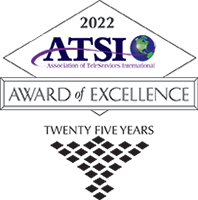Customer engagement has become a key differentiator for companies seeking to establish lasting relationships with their clientele. One industry that excels in this regard is the hospitality industry, where the customer experience is paramount. From hotels to restaurants, the success of businesses in this sector hinges on their ability to engage and delight customers.
In this article, we will delve into the strategies employed by the hospitality industry to optimize customer engagement and extract valuable lessons that can be applied to a 24 hour call center.
What Is Customer Engagement?
Before delving into the lessons provided by the hospitality industry, it’s crucial to have a clear understanding of what customer engagement entails.
Customer engagement is not just about creating a transactional relationship; rather, it involves building a connection that goes beyond a one-time purchase. It encompasses the emotional and psychological investment of customers in a brand, leading to increased loyalty, repeat business, and positive word-of-mouth.
Lessons on Customer Engagement from the Hospitality Industry
The hospitality industry showcases unparalleled dedication to personalized experiences and customer satisfaction. Let’s explore key lessons on customer engagement from this sector.
Lesson 1: Personalization is Key
While the hospitality industry sets a high standard for personalization, businesses in various sectors can take personalization to new heights by incorporating advanced techniques and technologies.
- Behavioral Data Utilization:Beyond static data, companies can leverage dynamic behavioral data to understand customer preferences in real-time. Analyzing website clicks, social media interactions, and purchase history allows for a more nuanced and up-to-date understanding of individual customer preferences.
- Predictive Personalization:Employ predictive analytics to anticipate customer needs and preferences before they are explicitly stated. By analyzing historical data and patterns, businesses can tailor their offerings and communications to align with what customers are likely to want next.
- Hyper-Personalized Marketing Campaigns:Implement highly targeted and personalized marketing campaigns based on individual customer segments. Utilize AI-driven algorithms to deliver personalized content, recommendations, and promotions through various channels, maximizing the impact of marketing efforts.
Lesson 2: Seamless Omnichannel Experience
Building on the hospitality industry’s success in providing a seamless omnichannel experience, businesses can refine their approach to create a truly interconnected customer journey.
- Real-Time Data Synchronization:Ensure that customer data is synchronized in real-time across all channels. This guarantees that customers receive consistent information, regardless of where or how they interact with the brand.
- Integrated Customer Support:Extend omnichannel support to include a unified customer support experience. Whether a customer reaches out via phone, email, chat, or social media, agents should have access to a unified view of the customer’s history and be able to provide efficient and consistent assistance.
- Omnichannel Customer Feedback:Implement feedback mechanisms across all channels to gain insights into the customer experience. By collecting feedback through various touchpoints, businesses can identify areas for improvement and enhance overall satisfaction.
Lesson 3: Proactive Customer Service
Going beyond traditional methods, businesses can harness advanced technologies to address customer needs and concerns proactively.
- Predictive Customer Service:Use predictive analytics to forecast potential issues and address them before customers are even aware of them. This not only prevents problems but also showcases a proactive commitment to customer satisfaction.
- Chatbot Integration:Integrate intelligent chatbots that can engage with customers in real-time, addressing common queries and providing assistance. These bots can also gather initial information to streamline the process when human intervention is required.
- Automated Customer Surveys:Implement automated surveys to gather customer feedback after interactions. Analyzing this data can unveil patterns and trends, enabling businesses to make data-driven decisions and continuously improve their service offerings.
Lesson 4: Storytelling and Brand Narrative
Expanding on the power of storytelling, businesses can delve deeper into crafting narratives that resonate with their audience.
- Interactive Storytelling:Explore interactive storytelling formats, such as immersive website experiences, virtual reality, or augmented reality applications. These technologies can transport customers into the brand’s narrative, creating a more engaging and memorable experience.
- User-Generated Content:Encourage customers to share their own stories and experiences with the brand. User-generated content, whether through social media, reviews, or testimonials, can amplify the brand narrative and foster a sense of community among customers.
- Story Continuity:Maintain consistency in storytelling across various brand touchpoints. Whether through marketing materials, customer interactions, or product packaging, a cohesive narrative strengthens brand identity and reinforces the emotional connection with customers.
Lesson 5: Loyalty Programs and Incentives
Taking inspiration from the hospitality sector, businesses can revamp their loyalty programs to offer unique and innovative incentives.
- Experiential Rewards:Move beyond traditional discounts and points by incorporating experiential rewards. This could include exclusive access to events, early product launches, or personalized experiences that go beyond transactional benefits.
- Tiered Loyalty Programs:Implement tiered loyalty structures that offer escalating benefits as customers ascend through various levels. This not only encourages continued engagement but also provides a sense of achievement for customers.
- Collaborative Loyalty Programs:Explore partnerships with other businesses to create collaborative loyalty programs. This can extend the range of rewards and incentives, offering customers a more diverse and appealing loyalty experience.
Lesson 6: Community Engagement and Social Responsibility
Building on the commitment to community engagement and social responsibility, businesses can amplify their impact through strategic initiatives.
- Employee Volunteer Programs:Involve employees in volunteer programs that contribute to local communities. This not only showcases the company’s dedication to social responsibility but also fosters a positive company culture.
- Transparent Sustainability Practices:Enhance transparency regarding sustainable business practices. Clearly communicate efforts to reduce environmental impact, ethical sourcing practices, and initiatives that align with social responsibility goals.
- Educational Outreach:Engage in educational outreach programs that align with the brand’s values. This could involve supporting educational initiatives, providing resources to local schools, or participating in mentorship programs to empower communities.
Lesson Application for Call Center Services to Elevate Customer Engagement
Call center services play a pivotal role in customer engagement for a multitude of industries. By incorporating key lessons from the hospitality industry, these services can transform routine interactions into meaningful engagements, fostering stronger relationships with customers.
Call center employee
Application 1: Personalization in Customer Interactions
In the realm of call center services, the emphasis on personalization translates into leveraging customer data for tailored interactions. By comprehending customer preferences, purchase history, and past interactions, call center agents adapt conversations in real-time to meet individual needs.
Dynamic scripting also enhances this approach, allowing agents to customize communication based on immediate customer information, ensuring a more personalized and relevant conversation that enhances the overall customer experience.
Application 2: Seamless Omnichannel Support
For call centers, embracing an omnichannel approach involves integrating various communication channels seamlessly. Whether customers reach out via phone, email, chat, or social media, ensuring a consistent transition between channels provides a cohesive and efficient experience.
Maintaining centralized customer profiles accessible across channels further contributes to a comprehensive understanding of the customer’s history and preferences, irrespective of the chosen communication medium.
Application 3: Proactive Issue Resolution
Exceptional call center customer service extends beyond reactivity to proactivity, drawing inspiration from the hospitality industry. Utilizing predictive analytics helps identify potential issues before escalation, enhancing customer satisfaction and demonstrating a commitment to service excellence.
In addition, integrating customer feedback systems ensures active engagement, allowing call centers to identify improvement areas and address concerns before they become recurring issues.
Application 4: Storytelling in Customer Interactions
In the call center realm, storytelling involves integrating the brand’s narrative into interactions. Agents are trained to share relevant stories about the company’s values, mission, and success stories, creating engaging and memorable customer experiences. Thus, encouraging agents to humanize interactions by sharing relatable anecdotes adds a personal touch, fostering a deeper connection between customers and the brand.
Application 5: Loyalty and Incentive Programs
Implementing loyalty programs within call center services involves recognizing and rewarding exceptional agent performance. This not only motivates agents but contributes to a positive work culture, subsequently enhancing customer interactions. Extending loyalty program benefits to customers through exclusive offers, personalized discounts, or priority service encourages repeat engagement and builds customer loyalty.
Application 6: Community Engagement and Social Responsibility
Call centers can draw inspiration from the hospitality industry’s commitment to community engagement and social responsibility. Engaging call center teams in community involvement initiatives, such as participating in local events or supporting charitable causes, aligns with modern consumer values. Integrating environmentally friendly practices into call center operations improves the overall image of the business, fostering a positive reputation.
Application 7: Knowledge Management for Enhanced Personalization
In the call center context, knowledge management involves establishing a comprehensive knowledge base encompassing customer preferences and solutions. This empowers agents with the information needed to provide personalized recommendations and address customer inquiries effectively.
Moreover, implementing customer journey mapping aids in gaining insights into touchpoints and pain points. This allows call center agents to address concerns and enhance the overall customer experience proactively.
Application 8: Real-Time Collaboration and Cross-Training
Integrating real-time collaboration platforms within call center services facilitates communication among agents. This ensures seamless collaboration to resolve customer queries promptly. Developing cross-training programs exposes call center agents to various aspects of the business. It broadens their knowledge and enables them to provide more comprehensive support, thereby adding value to customer interactions.
Application 9: Automated Customer Engagement Tools
In the digital age of call center services, incorporating chatbots and virtual assistants streamlines routine queries and customer interactions. Chatbots and virtual assistants allow human agents to focus on more complex issues, improving overall efficiency and reducing customer wait times. Utilizing automated follow-up systems to check in with customers after interactions demonstrates a commitment to customer satisfaction and reinforces positive engagement.
Application 10: Gamification for Employee and Customer Engagement
Introducing gamification elements within call center services motivates agents through recognition and rewards, fostering a sense of accomplishment and engagement. Creating gamified challenges for customers encourages interaction, such as participation in surveys or loyalty program activities, enhancing overall customer engagement.
Application 11: Predictive Personalization through AI
Call centers can leverage artificial intelligence (AI) in analytics tools to predict customer preferences and behavior. By analyzing historical data and patterns, AI enables call centers to anticipate customer needs and provide proactive, personalized recommendations during interactions, enhancing the overall customer experience and maximizing cross-selling and upselling opportunities.
Application 12: Social Media Listening and Engagement
In the call center landscape, actively monitoring social media channels keeps agents informed about customer sentiments, concerns, and feedback. Such real-time information allows call center agents to address issues promptly and engage with customers on the platforms they frequent. Authentic engagement on social media, responding to comments, and participating in discussions humanize the brand and strengthen its social media presence.
As businesses navigate the dynamic landscape of customer engagement, the lessons drawn from the hospitality industry offer a blueprint for success. By incorporating personalization, embracing omnichannel support, and fostering proactive approaches, call center services can elevate customer interactions to new heights.
Answer United stands at the forefront of the call center industry, boasting six decades of leadership and a team of proficient, award-winning agents. Our commitment to providing exceptional and professional 24-hour call center services aligns with the principles discussed in this article. Partner with us to transform routine interactions into meaningful engagements, fostering stronger relationships with your customers. Elevate your customer engagement strategies with Answer United, where excellence is not just a standard; it’s a tradition. Schedule a demo with us today in California to explore how our call-answering service can redefine your customer service experience.












